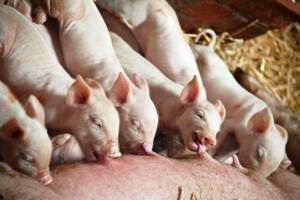Probiotic yeast improves feed intake of lactating sow

Results of a meta-analysis show that probiotic yeast Saccharomyces cerevisiae boulardii CNCM I-1079, helps increase sow feed intake during lactation.
The study was presented by Lallemand Animal Nutrition at the American Dairy Science Association (ADSA) and American Society of Animal Science (ASAS) Joint Annual Meeting, July 12-16, 2015, in Orlando, Florida.
Optimal feed intake in early lactation is key to ensuring sufficient milk production and limiting sow body weight loss, which impacts both piglet and sow performance. These results confirm the monogastric-specific probiotic* represents a valuable tool for lactating sows management. The meta-analysis encompassed 10 recent commercial trials performed with S. cerevisiae boulardii CNCM I-1079 throughout Europe and North America and included 1,111 sows. This robust statistical method showed an overall significant effect (P< 0.05) of the probiotic on sow feed intake in lactation ranging from 0.180 to 0.260 kg of extra feed /day/sow (depending on the statistical model used).
Balancing microbiota
Eric Chevaux, PhD, Applied R&D Manager for Lallemand Animal Nutrition, says the probiotic action of S. cerevisiae boulardii CNCM I-1079 helps improve sow feed intake by balancing the microbiota of the digestive system. Documenting the effect across multiple trials was a result of producer feedback.
“When it comes to feed intake measurement, inter-individual variability remains high, even when parameters such as parity, feed or environment are fixed,” he says. When feed intake during lactation is improved, both piglet and sow productivity can be improved, adds David Saornil, DVM, Swine Product Manager for Lallemand Animal Nutrition. “The effects are numerous: Piglets’ average daily gain can be increased due to better milk production; sows appear to lose less body weight during lactation; and the wean-to-estrus interval can be reduced,” he says. “We know that significant weight loss during the first lactation has negative effects on future litter size, a phenomenon known as ‘second litter syndrome.’ The importance of sow body weight cannot be underestimated during this key step of pig production.”
*(Levucell SB)











